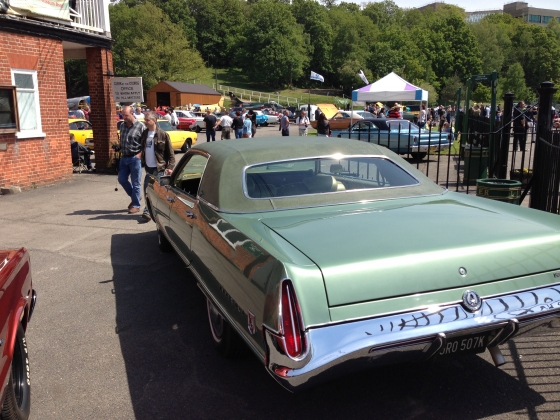A strange obsession with some of the cars of Chrysler's long forgotten luxury brand.
If you regularly read the Grand Touring blog on Drive Cult you will be aware that my taste in cars usually revolves around Italian, German or sometimes British classic GT cars.
Lately though, I’ve become rather obsessed with something very different and rather larger! It all stems from last years trip to the MOPAR day held at the Brooklands Museum. I went with the intention of checking out the Chargers, Challengers and Cudas that make up the cars you typically think of when referring to classic Chrysler built cars. However I was completely blown away by the sight of a 1972 Imperial.
If you live on the east side of the Atlantic Ocean you can be forgiven for not knowing what an Imperial is—I certainly didn’t before the show. The brand ran from 1955 to 1975 (with a brief reappearance in 1981-1983), and was Chrysler’s luxury division competing with Ford’s Lincoln and GM’s Cadillac.
For much of the brand’s life it ran on unique platforms. However, in 1967 the Imperials began sharing Chrysler’s C body platform, also used by other full size Chryslers. The 1972 car, which so fascinated me, was part of the so called fuselage look, which was first adopted in 1969 and revised for 1972 and 1973.
There is only one word that can be used to describe this car: MASSIVE. At nearly 6 meters, it’s the longest production car built since the Second World War. However, it has a notably low roofline, and the frameless windows and lack of a B pillar give it something of what we now refer to as a 4-door coupé look. There was also a 2-door coupé version offered. It’s certainly very imposing, especially with the full width grille with headlights appearing from behind covers in the grille when needed.

Weighing in at around 2,400 kg the Imperial needed a big engine, and it got one in the form of Chrysler’s 7.2-litre (440 cu in) Wedgehead V8 making a quoted 350-bhp. Naturally, this behemoth also took some stopping, and it was the first US built car to be offered with Bendix ABS brakes as an option.
Obviously, a car like the 1972 Imperial is totally impractical in the UK, especially as it is rather larger than a standard sized UK garage, and after a month or so of researching Imperials, I quietly forgot about them until the other day when my daily email from Bringatrailer.com revealed an older but even more interesting version of the Imperial, the 1967 Crown Coupé Mobile Director.

The 1967 Imperials are arguably more elegant cars than the imposing fuselage cars that followed them, and their squared-off lines work rather well, especially in Coupé form. For the Coupé, Imperial offered the very unusual Mobile Director option. Here the front passenger seat could be swiveled around, and a desk was deployed from the back seat, effectively making the car a small office. Why this option was only offered on the coupé and not the 4 doors I’m not sure, but it’s certainly an unusual feature. It was also an expensive and not very popular one. In the two years it was offered, only 81 cars were delivered with the option.

Classic cars like Imperials are all but forgotten as buyers today seek out the Muscle cars of the period. I suspect that’s probably because they were the sort of car that Dad’s actually brought when their kids wanted them to buy Chargers and Mustangs. However, with TV shows like Mad Men, that may change a little as the Imperial seems very much the sort of car Don Draper would have. Certainly if I lived in the States, I would look for a 67 or 72 Imperial for my car collection.
H/T Bringatrailer
For more information on Imperials check out imperialclub.com
1972 Imperial photos by the author. 1967 Crown Coupe photos mobile director via ebay.

